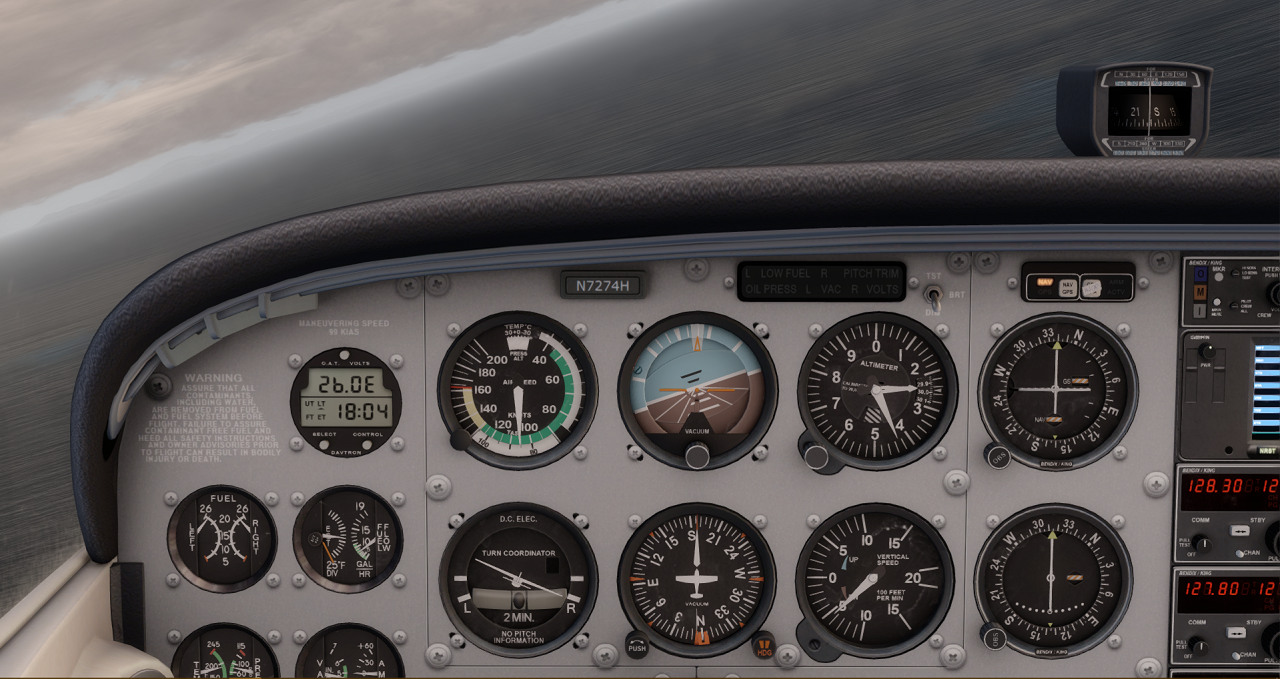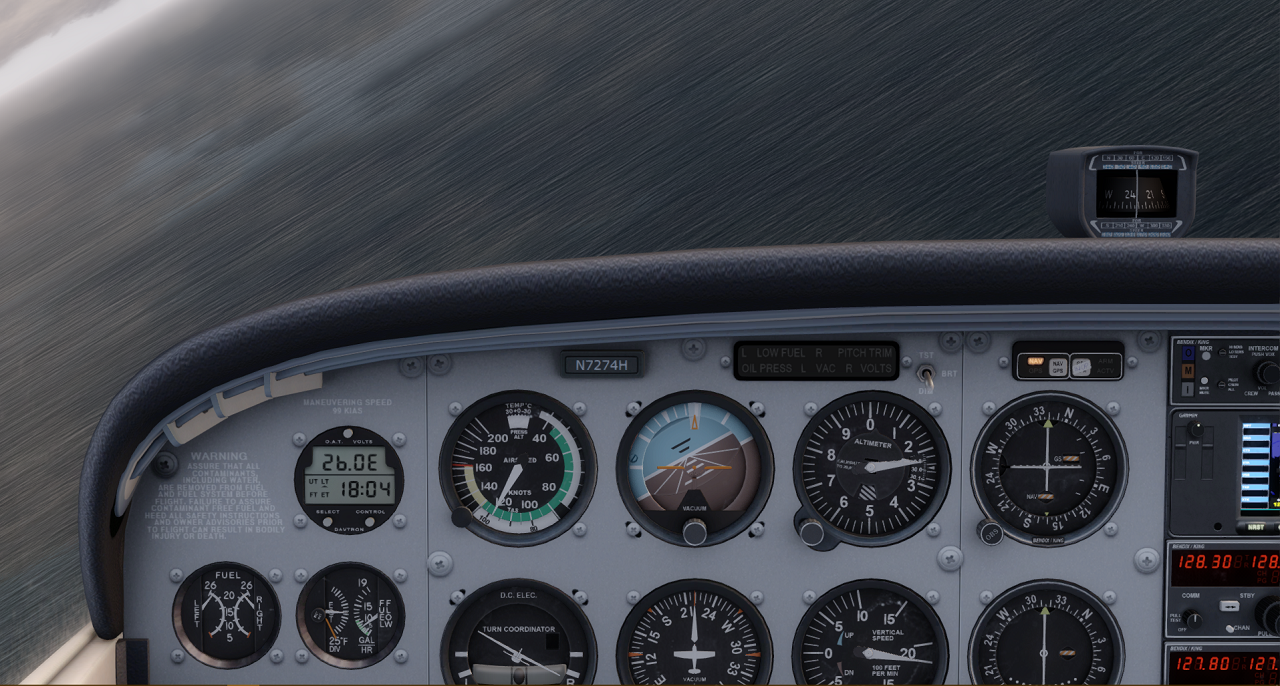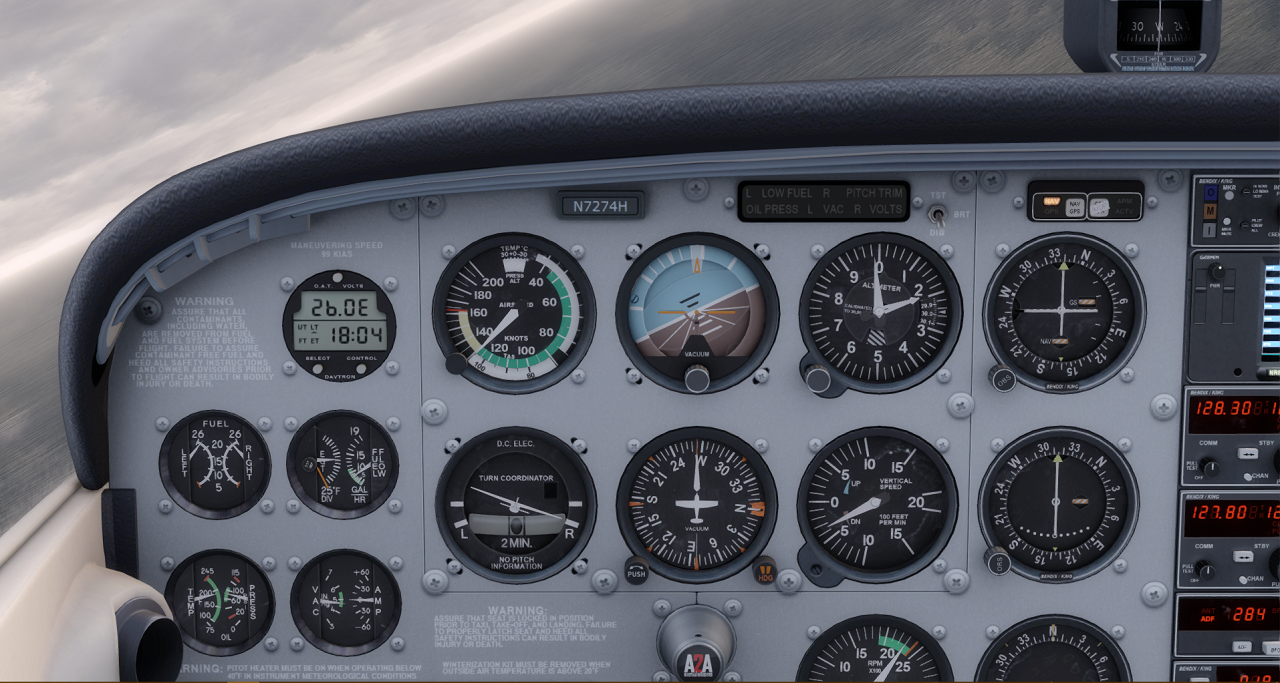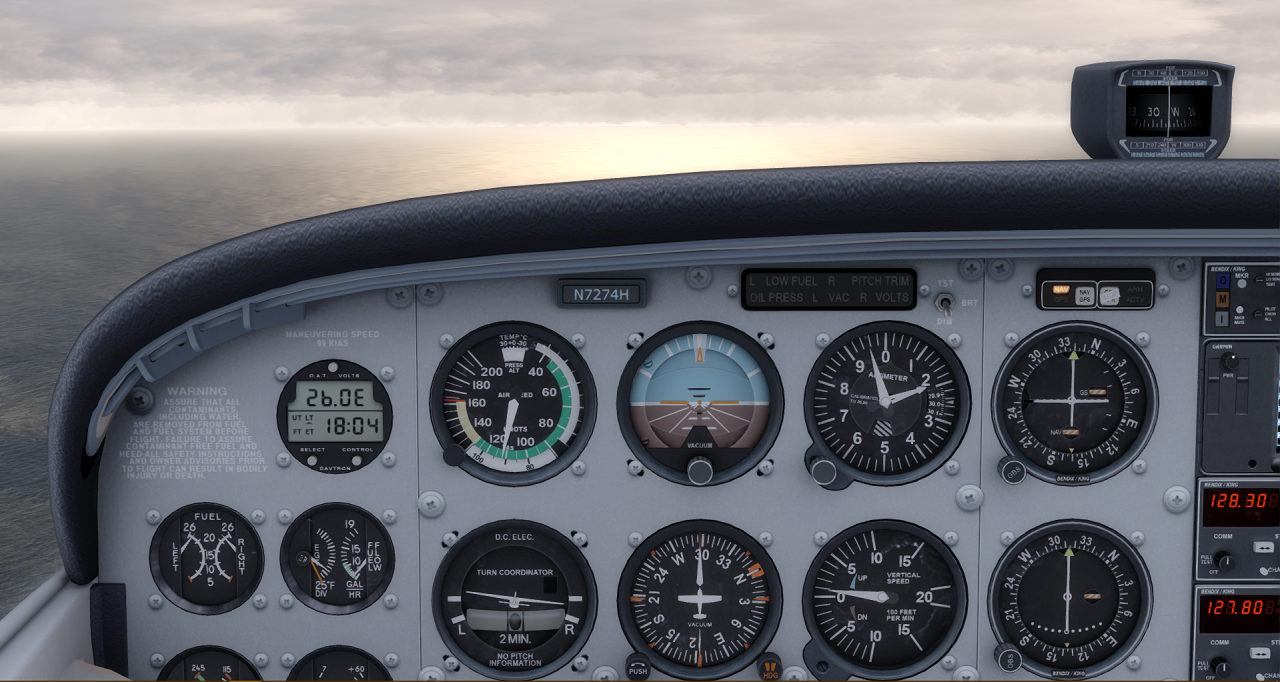¶ Theoretical Knowledge
At bank angle of 30° or more, you aircraft will have a natural tendency to continue banking while adopting a nose-down attitude.
As this situation gets worse, your airspeed will increase rapidly.
At this moment if you try to raise the nose of your aircraft, the airspeed will dramatically increase and you may enter into an over-speed situation. This will create a spiral dive.
Spiral dive sounds as desperate as a stall but a simple recovery procedure exists.
First, given the high speed, reduce throttle to idle and immediately reset the bank angle to neutral.
Then initiate a very smooth recovery to initiate a climb and only apply climb power when required.
¶ Practical case
Our aircraft is established in stabilised straight level flight at 100 knots.
Initiate a turn with a 20-degree bank angle without correcting the pitch.

From now on, do not manipulate flight controls and let your aircraft fly on its own.
You will notice that your aircraft will begin to increase its bank angle, increase its nose-down attitude and speed will increase dangerously.

If you try to simply pull the flight control in order to correct the nose-down attitude, it is now too late.
You will put your aircraft at risk by increasing the airspeed at a high load factor

To solve the situation, set throttle to idle immediately, then cancel the bank angle and return to leveled wing attitude.
To help the speed reduction, pull gently on the flight controls, adopt a nose-up attitude and set climb power when speed is safe.

- None
- VID 200696 - Creation
- VID 496402 - Wiki.js integration